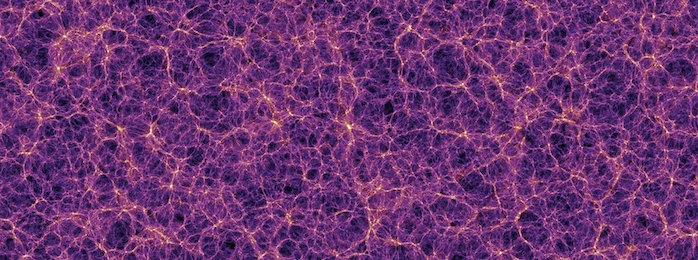Dark Matter

A beautiful problem in physics
We see evidence for dark matter in a fantastic range of scales, starting from galactic rotation curves, to the velocity distributions of galaxies and gravitational lensing maps in galaxy clusters, to large-scale structures like superclusters and filaments mapped by optical and infrared surveys, to the horizon of the visible Universe itself through studies of the Cosmic Microwave Background (CMB). And looking inward, many models of physics beyond the standard model predict particles which have the right properties to be dark matter, generating a large effort to find evidence for the production of such particles at the LHC. The dark matter problem extends its reach over 40 orders of magnitude, from the smallest sub-atomic scales to the edge of the Universe.
But what is dark matter?
Measurements made over the last couple of decades provide strong evidence that dark matter comprises 27% of the energy-density and about 80% of all the matter in the Universe. OK, but what is it? There are literally thousands of models of proposed "new" fundamental particles that could be dark matter. As experimentalists, we put these models into broad categories depending on how (and if) the proposed particle interacts with the standard model, and furthermore by their potential experimental detection technique. There are several broad categories, with some overlap between them. There are axions and axion-like particles, dark photons and other light force carriers, Kaluza-Klein modes in theories of extra dimensions, sterile neutrinos, and supersymmetric particles. Theories based on hidden sectors or asymmetric dark matter can overlap with some of these particle categories. There are many other categories beyond this short list. The diversity of potentially viable dark matter models is a testament to both the creativity of theorists and the enormous interest and effort that has been put into this field.
Our group focuses on two broad classes of particles. The first are from light dark matter models that can generate recoils in detectors, either through electron recoils or nuclear recoils, with small recoil energies on the order of 10 eV or above. These models predict masses in the keV-GeV range and are usually connected to a new hidden sector of fundamental particles that have yet to be discovered. The second class are models that produce an observable X-ray line in the sky through annihilation, de-excitation, or decay, such as sterile neutrinos.
